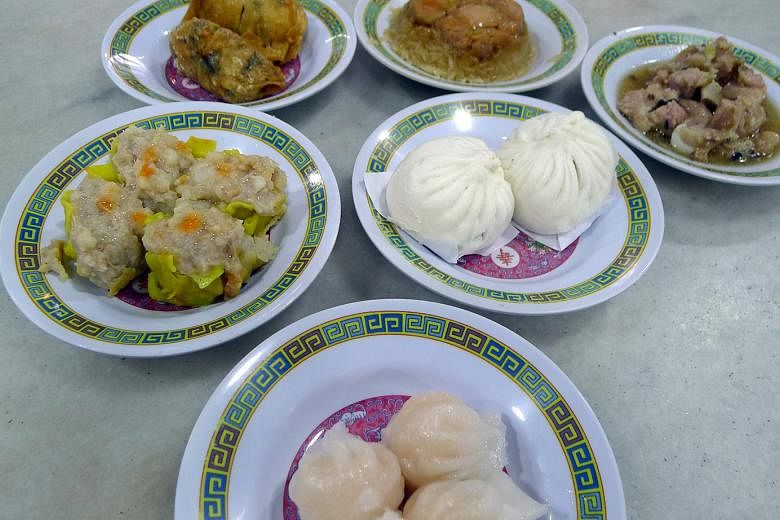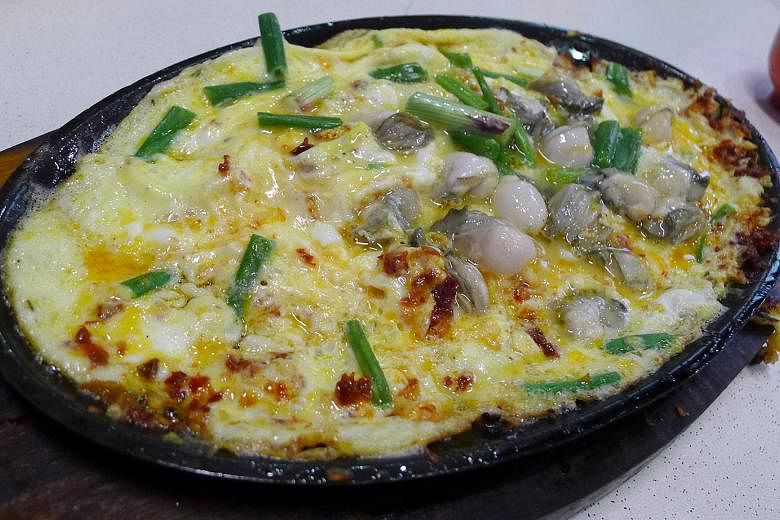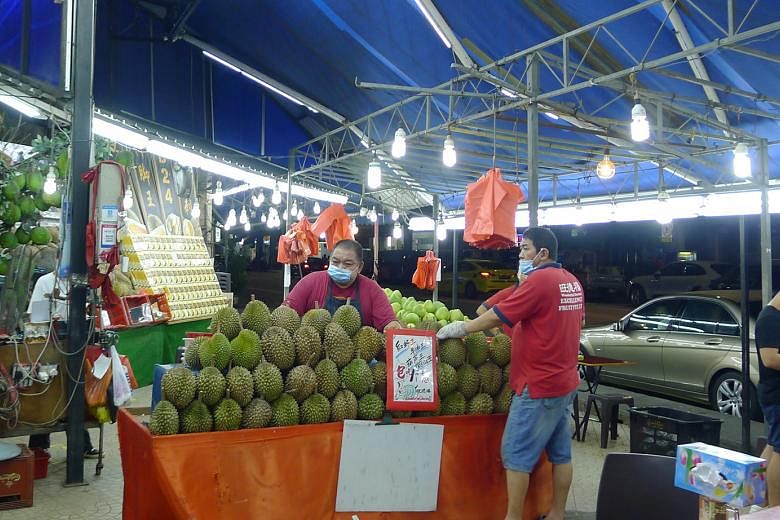Every day, streams of people walk past the Ho Kee Pau shop in Lorong 27 Geylang. Many stop for a hot bun.
Few, if any, take a second look at a small bull-like sculpture in the glass window out front. Those who do will be surprised to learn it is an artwork by master potter Lim Kim Hui.
This is one of the tasty morsels I enjoy on Sins & Salvation: A Geylang Food Walk, a local tour to rediscover Singapore neighbourhoods.
Geylang, Singapore's largest designated red light area, is known for good food and many eateries which open till the wee hours to cater to nightbirds and those who flocked there, pre-pandemic, to seek other pleasures.
I used to avoid the place because it was crowded and parking was a nightmare. On my occasional food crawls there, it was eat and go.
But this walking tour, after the onset of Covid-19, appealed to me. Geylang was far less congested and I was able to enjoy the food without the stress.
The evening started at 6.30pm on a Friday at Aljunied MRT station, where our guide Tony Tan, 48, had arranged to meet us. The weekly tour by his tour company Betel Box is for four participants, who pay $80 each for more than four hours of eating and walking.
Ho Kee Pau, a short walk from the station, was the first stop, where we settled down for a quick briefing and had hearing sets distributed to us. While we downed dim sum like siew mai and lor mai gai, Mr Tan gave us a rundown of Geylang's history.
There are a few theories on how it got its name, one of which is derived from a misspelling of the Malay word "kilang", which means factory. It apparently used to be a leather industry hub, and a few old companies trading in leather still dot the lorongs.
The northern section was swampland, thus the name Paya Lebar, which is Malay for "wide swamp". There were lemongrass ("serai" in Malay) plantations too, thus the name Geylang Serai for another section.
But as the farms and swamps were cleared, bars started popping up to form a red light area.
Mr Tan also regaled us with how Ho Kee Pau grew from a stall in Geylang into an islandwide chain, and how its owner is an art lover who also runs the Black Earth Art Gallery in Joo Chiat Road - which explains the sculpture in the window.
For the dim sum, go for the char siew bao, which is smaller than most and has a distinct taste of coriander in the pork filling. But avoid the har gau, which has a thick skin.
Pace yourself, he repeatedly advised, because over the course of the tour, we would taste about 16 food items at four stops. But there would also be plenty of walking to work it off.
For the next hour, we wandered through the odd-number lorongs from Aljunied Road to Geylang Road.
This area has one of the highest density of religious organisations, many of them housed next to one another.
On an upper floor of what looked like an office building, we saw signboards for Buddhist, Taoist and Christian groups. There was a gongfu centre, too, in the mix.
Mr Tan also pointed out a place where people put their ancestral tablets. We stopped at many temples, including one that appeared like it was built partly in a cave.
Because of pandemic safety measures, many of these were closed to the public, affording us only a peek from the entrance. But I learnt to tell the sex of the two stone lions that usually guard their doors. The female is usually depicted with a cub at its feet.
Unlike the more run-down buildings in the lorongs, the shophouses in Geylang Road have been meticulously conserved so their original facades remain.
There was an old bungalow with a large compound at the Aljunied Road junction that I had never noticed before.
You could tell that it was built for a trader, said Mr Tan, because of the high ceiling of the ground floor. Apparently, that was so his bullock cart could pull up right at his veranda and the goods could be unloaded directly into the house.
From the main road, we walked into the even-number lanes, where the brothels, now closed, are. Unlike previously, when the area was packed, it was now depressingly quiet. Mr Tan paused to give a summary of the prostitution trade, which is legal and comes with a rigid set of rules laid down by the authorities.
The next stop got us more excited as we sat down at the popular Lorong 9 Beef Hor Fun, right across from the well-known Geylang Lorong 9 Frog Porridge. I was surprised to learn that you could sit at either stall and order food from both.
I had tasted the hor fun years ago, but was turned off by the sodium bicarbonate used to tenderise the beef. Happily, it tasted better this time.
The frog porridge - comprising a claypot of congee simmered in stock and another of frog legs cooked in dark soya sauce - retained its standard.
But I was more impressed by the oyster omelette hot plate from the same coffee shop, with fresh and plump oysters sitting on a layer of fluffy egg.
There was sambal stingray too, as well as zichar dishes like coffee pork ribs, cereal prawns and salted egg prawns - all top picks of the hundreds of tourists who have been on this tour, which has run for 12 years now, says Mr Tan.
There was too much food and we still had two more stops, so leftovers were packed to be taken home.
Next up was a Hong Kong-style eatery called 126 Dim Sum Wen Dao Shi in Sims Avenue, but instead of sitting down, Mr Tan ordered some baked goodies to go instead, so we could enjoy them with durian at the next stop.
So while waiting for a Mao Shan Wang durian to be prised open, we took bites of egg tarts, walnut cookies, steamed ma lai gou and coconut tarts. Because it was around the Mid-Autumn Festival, we had mini mooncakes too.
Stuffed and reeking of durian, we took our last walk back into the lorongs. At the junction of Lorong 19 and Lorong Bachok was the most surprising find of the evening - a shophouse with a highly decorative, colourful facade.
Built in 1929, it has panels depicting classic Chinese tales and fantastical elephants and other animals. Most interesting of all were Sikh and Sepoy guards moulded in relief on pillars flanking the entrance to guard the building.
So while the food did not reveal surprises, because the popular eateries are not new to me, I discovered many sides of Geylang I had never seen before.
• For information on the tour and to book, go to www.betelboxtours.com. It costs $80 a person and is only for those aged 18 and above. The price includes all meals. Turn up with a hearty appetite and comfortable walking shoes.
Correction note: An earlier version of the article attributed an artwork to Cultural Medallion recipient Iskandar Jalil. It has since been clarified that the artwork is by master potter Lim Kim Hui.








